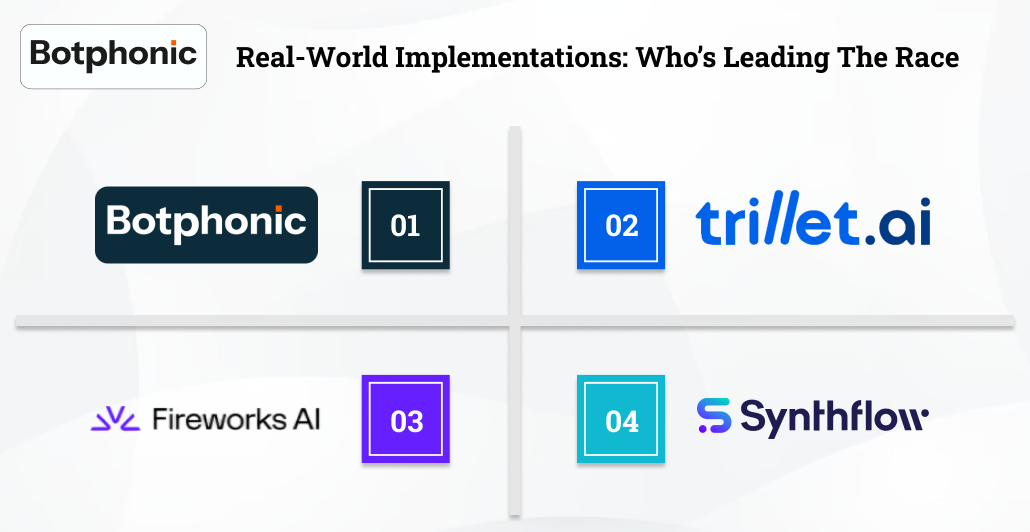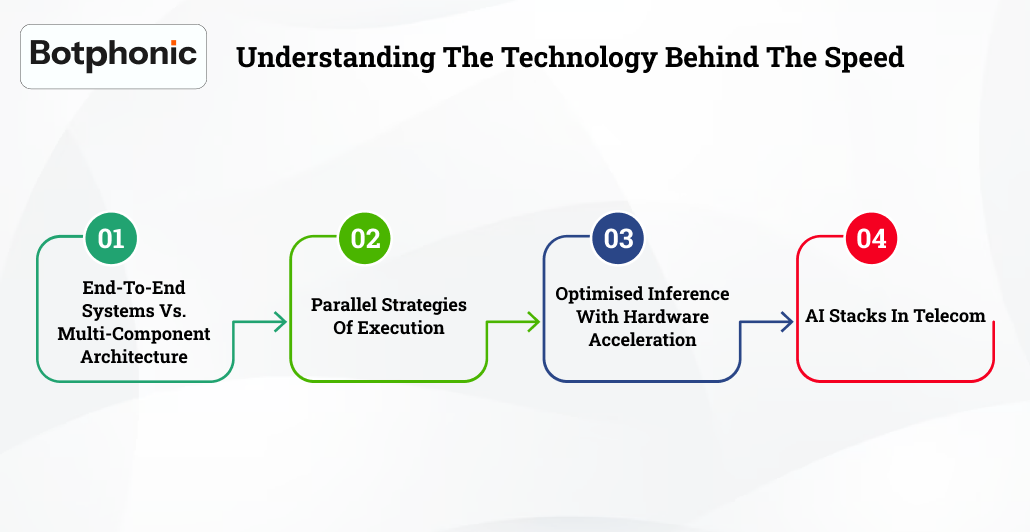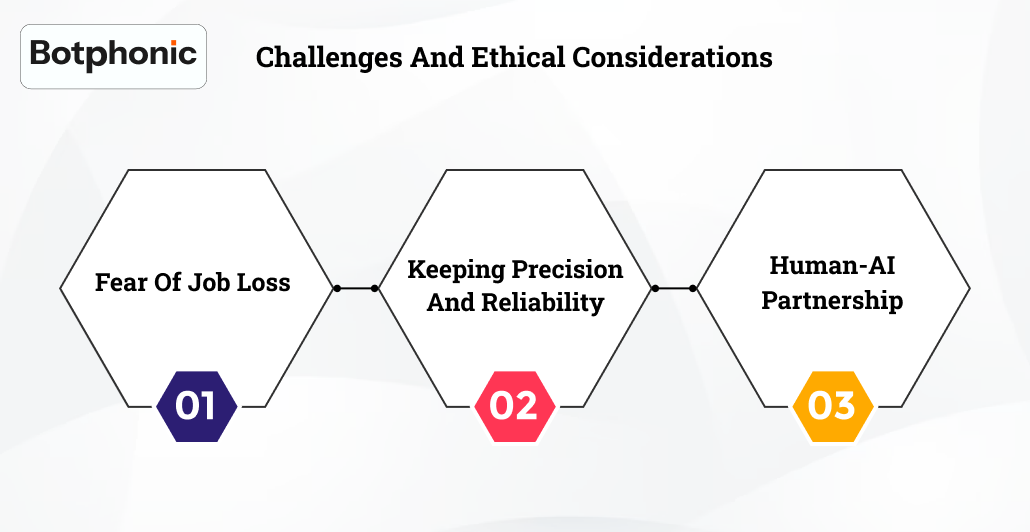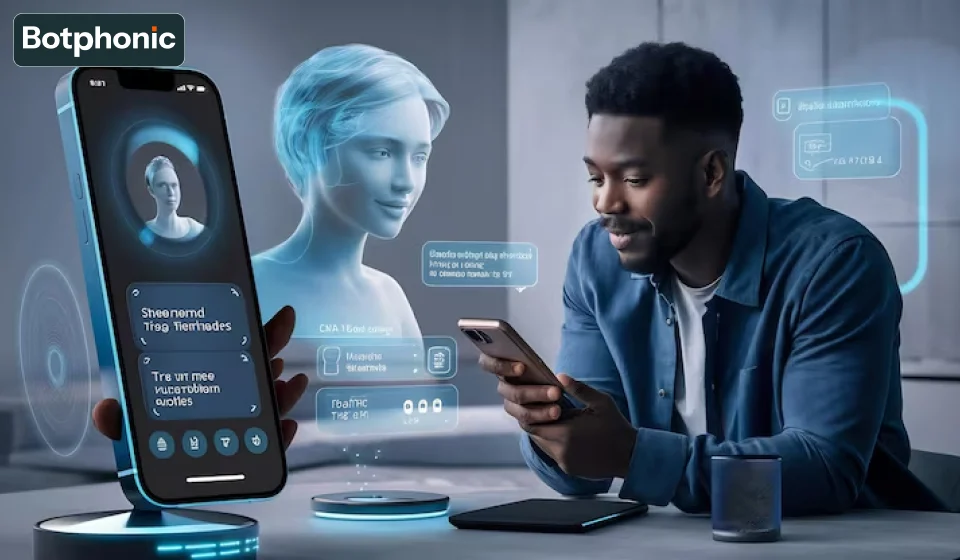
Summarize Content With:
Summary
In this blog, we will discuss how, with sub-second latency in AI phone calls, conversations are becoming smoother, more human-like, and a lot more efficient in terms of call centre operations.
4 Key Takeaways
- Even small lags when communicating with AI can turn a conversation into a robot, which affects customer confidence.
- Sub-second latency opens natural, seamless communication.
- Existing call assistants applying AI in the real world are already showing their value-add by driving down the cost and enhancing customer satisfaction.
- The future of AI call centres will be composed of speed, intelligence and a human-AI collaboration.
Introduction
Let’s be honest, we’ve all had those frustrating experiences with call centres:
- Long wait times that test your patience.
- Artificial voice assistants that do not understand you.
- Unnecessarily Awkward pauses in the AI-driven calls make a conversation not feel smooth.
- Agents were stretched thin, trying to get through peak-hour calls.
Feel like you are not alone in these. Customers today will demand immediate answers, and the business requires scalable solutions that cannot compromise on service.
It is with sub-second latency AI phone calls that transformation begins. In this blog, we will learn how quicker AI-driven conversations are transforming the way customer support is carried out, what powers these advancements, and how businesses can implement them to benefit efficiency.
Why Latency Matters in Voice AI?
We do not even realise it, but humans are very vulnerable to the timing of conversation. Even a slight delay can have an immense impact.
- Delay expectation by humans in conversation: Human beings are sensitive to delays as low as 100-120 ms. More than 250 ms can get robotic (Telnyx).
- Industry standard: 800ms target at the highest level of any production-ready AI, with 500ms emerging as the target latency sweet spot in AI-powered natural dialogue (Retell AI ).
- The effectiveness of sub-second latency AI phone calls: Even 1.5 seconds of delay feels sluggish, whereas ~400 ms feels natural.
Consider how awkward it is when someone webconferencing has a lag. That is exactly how AI calls sound awkward, unnatural, and aggravating.
Real-World Implementations: Who’s Leading the Race

Several newcomers are trying to revolutionise the field of AI call assistant by reducing latency by many orders of magnitude:
- Botphonic AI – A powerful bot that is geared towards call automation in real life.
- Trillet.ai – Gives ~1.9 s latency that gets just above the 2-second line between fluid and laggy interaction.
- Fireworks.ai– Enables scorching low latency of under 500 ms by optimising and co-locating LLM and audio components.
- Synthflow AI – The no-code platform with a lightning response time of ~400 ms. Convenient and very fast.
Focused on custom, real-time AI calls that may be interrupted, as well as latency of less than one second.
Explore the latest sub-second latency solutions designed for call centres.
Try Now!Understanding the Technology Behind the Speed

What is the secret to the low latency of these platforms? In simple terms, it is about letting it go:
1. End-to-end Systems Vs. Multi-component Architecture
Moving to this modular structure (such as Fireworks.ai) streamlines projects by decoupling transcription, AI processing and speech synthesis.
2. Parallel Strategies of Execution
Other systems have typical immediate responses via their lightweight models, and then an AI model works on a follow-on response. This continues the dialogue naturally.
3. Optimised Inference with Hardware Acceleration
Other AI services We see companies such as Phonely collaborate with hardware giants (Groq, Maitai) to accelerate the execution of AI models.
4. AI Stacks in Telecom
Custom-built AI models (such as Neto AI) are trained on specific tasks in telecoms; this increases the speed and accuracy.
AI Call Assistant & AI Call Centre Benefits
Now, the practical advantages of the AI call assistant and AI call centre, are those harnessed by the ultra-low latency of sub-second response times.
How AI Call Assistants Outperform Traditional IVR
- Conceptualise tone and intent.
- Adjust during a conversation rather than maintain lengthy scripts.
- Transfer to human agents when they are required.
Key Benefits for Call Centres
- Decrease wait time: Waiting time leads to satisfaction.
- Be more consistent: No fluctuation in voice or tolerance.
- Improved capacity: AI never feels tired when its capacity is at its highest.
- Free human agents: Human beings can concentrate on high-value and complex conversations.
Use Cases Across Sectors
- Finance: Fraud alerts and customer identification on the spot.
- Healthcare: Schedule maker & symptom triage.
- Real estate: Virtual property tours & lead qualification.
- Retail & eCommerce: Order tracking, returns, upselling.
Imagine an AI call centre where every customer feels heard instantly. That’s the power of sub-second latency AI phone calls.
That’s the power of AI-driven, sub-second latency calls ready to transform your customer experience.
Request a Free DemoChallenges and Ethical Considerations

As is always the case, a new technology has its own set of difficulties.
- Fear of job loss: A Sheffield-based bank ran a trial of AI that, in fact, further augmented the workforce required, as the AI was ineffective in handling the finer points of its work.
- Keeping precision and reliability: The very quick feedback is awesome, but mistaken answers or visions can destroy consumer confidence.
- Human-AI partnership: The AI must complement, not substitute, man. Simple/straightforward cases may be handled quite well by humans, but complex emotional or sensitive cases require empathy-based treatment.
Stat Insight: A report commissioned by jobs and skills Australia found that despite the threat of automation in many routine clerical tasks, a much greater proportion (about 79 percent of occupations have low automation exposure and high potential to be augmented by AI, affirming that the majority of human activities are more likely to change alongside AI than be displaced altogether.
Conclusion
What the future of call centres will look like is easy to predict:AI-driven call assistants with millisecond latency will transform efficiency, capacity and customer satisfaction by eliminating embarrassing awkward silences and replacing the interactions with conversational, naturally human interactions, so-called centers that have been support-driven cost centre become value-driven customer experiences.
Speed is not the only one; it is speed with trust, accuracy, and empathy. Companies that have their balance right will be trailblazers in the emerging era of customer service.

